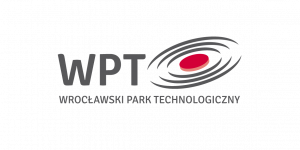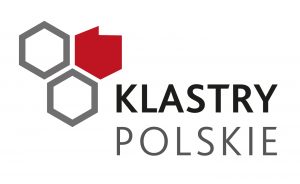Przez ostatnie 3 lata pracowaliśmy nad przygotowaniem zestawu narzędzi komercjalizacji, które pomogą Państwu przejść przez skomplikowany proces wprowadzania na rynek wyrobów medycznych IVD. Zachęcamy do zapoznania się z oryginalnym artykułem poniżej i wypróbowania opracowanych narzędzi!
PS. Nie spoczywamy na laurach – już od października zaczynamy projekt BIC-BRIDGE, który rozszerzy nasze możliwości wsparcia wdrażania biomarkerów.
Więcej informacji na stronie: bicguide.biomarker.nu
BIC Tools – Key to Successful Biomarker Commercialization – NOW AVAILABLE
- BIC consortium developed four tools to support and guide the highly regulated and strict development phases of the vitro diagnostics (IVD)-applicable biomarker development process
- Tools are intended for academic researchers, SMEs, and technology transfer organizations (TTOs) and are available at bicguide.biomarker.nu
- Bic Tools cover clinical, regulatory, and business aspects of the commercialization process
The life science industry is going through a technological transition. In the future, new innovations are expected in areas where individualised medical science, elderly care, digital services, genetics, and preventive health care meet. Here, biomarkers play a crucial role.
What is a biomarker?
According to WHO, a biomarker is any substance, structure, or process that can be measured in the body or its products and influence or predict the incidence or outcome or disease. The biomarker (or analyte) can be a nucleic acid, protein, polysaccharide, or metabolite. Examples of well-known biomarkers are CRP (C-reactive protein), troponin or cholesterol.
In healthcare, biomarkers are used to detect, predict, and monitor disease and to select the best therapeutic actions. In the pharmaceutical industry, the biomarkers are utilized as versatile tools throughout the drug development process.
Why commercialize a biomarker invention?
Patients will most likely not be able to benefit from a biomarker invention unless it goes through a commercial route. Thousands of candidate biomarkers are being discovered and the number of publications has exploded in recent years, but few findings enter to the specific assay development phase, pass the evaluation of analytical and clinical performance characteristics, and are eventually transformed into IVD assays. Biomarker development and commercialization is complicated, time consuming and expensive.
To improve the success rate, eight organisations (hospitals, universities, and science parks) from the Baltic Sea region joined forces in a transnational Interreg-funded project, which enabled the development of an in vitro diagnostics (IVD)-applicable biomarker commercialization toolset. The tools offer guidance through the highly regulated and strict development phases of the development process to academic researchers, SMEs, and technology transfer organizations (TTOs).
The Interreg project brought together and opened doors to relevant international partners who had already experiences on bringing biomarkers on the market. „We have been very lucky to have a highly professional and active advisory board with very strong and diverse competences, so they were an essential support and complemented the group of partners,” explains Valerie Daussin from the innovation department of the University Hospital of Aalborg in Denmark, project leader for the consortium. The advisory board included experts from organizations such as Bayer, Astra Zeneca, Genome British Columbia, the Finnish Health Technology Association or EIT Health, to mention just a few.
Tools to ease the way towards applicable biomarkers
The biomarker commercialization tools, available at bicguide.biomarker.nu, are free of charge and consist of a Biomarker Commercialization Guide, a Best Practices Handbook, a Regulatory Guide, and a Review Tool. Together they guide researchers and product developers through the technology readiness levels and remind about the clinical, regulatory, and business aspects of the innovation process.
However, the tools are only intended as guidance. “They have been compiled to the best of our knowledge from a wide variety of sources but cannot claim to be complete. As soon as possible, think of establishing a dialogue with specialists and experts in the field,” stresses Valerie.
The BIC Guide gives a better visualisation of the cross disciplinary approach that is key for successful commercialisation. It provides guidance through the technology readiness levels (TRL) and covers the clinical, regulatory, and business aspects of the commercialization process.
Instead of acting as a rulebook, the BIC guide supports the user in the process of taking the decisions that are relevant for user’s own project, supporting own internal procedures and structure own project management. “You will be able to follow the lead to evaluate the potential of the scientific results and help build a case to convince partners or investors and facilitate the communication with them,” tells Valerie.
The Best Practices and Pitfalls in Commercializing IVD-Applicable Biomarkers Handbook includes more than 50 topics spanning development and commercialization aspects of IVD-applicable biomarkers, intellectual property right (IPR) issues, business models, and agreement and legal viewpoints.
“For this purpose, 75 interviews were conducted with researchers, TTO officers, investors, small and large companies, clinicians and cluster organizations,” tells the main author of the handbook, Dr. Piia von Lode, Innovation Manager at the University of Turku, Finland. The book also contains experience-based input of the eight project partners and 14 Advisory Board members, who shared similar problems in developing and commercializing IVD-applicable biomarkers.
The BIC In Vitro Diagnostics Regulatory Guide and the BIC Review Tool are supportive tools intended for use alongside the BIC Guide. The IVD Regulatory Guide introduces researchers and entrepreneurs to basic understanding of the regulatory process for CE mark of IVD diagnostics, along with the development of the project toward a clinical product, while the BIC Review Tool is a comprehensive checklist for selection of the most promising invention for further commercialization.
Tool development continues
The BIC Consortium continues to the improve the biomarker commercialization tools in the new BIC Bridge Project. “One of the aims of this project is to finalise the development of the two last phases of the BIC Guide, related to the industrial assay development, and commercial launch and clinical implementation, where our organisation will play a crucial role” tells Tero Piispanen, senior executive at Turku Science Park Ltd., Finland. In addition, the BIC Guide will be upgraded from a static support tool into an interactive project management tool. The BIC Guide proved to be a valuable tool for educational purposes. The BIC Bridge project will also develop this aspect of the tool.
About the BIC Consortium
The BIC consortium is a transnational cooperation of 3 research and 5 cluster organizations in the Baltic Sea Region: Ideklinikken, Aalborg University Hospital and Biopeople (Denmark), BioCon Valley® GmbH (Germany), Wrocław Technology Park (Poland), Turku Science Park Ltd. and University of Turku (Finland), Tartu Biotechnology Park (Estonia) and Vilnius University (Lithuania). Aalborg University Hospital is the lead partner of the consortium. The project’s budget is EUR 2.55 million and is co-financed by the European Regional Development Fund through the Interreg Baltic Sea Region Programme with EUR 1.96 million.




